Portfolio: Photographs
- Ours to Deflower
- Enigmatic Demand
- So, What’s In It For Me?
- The Unconverted Masses
- Diversion
- Suffer the Consequences. This Means You.
- Reservations Are Required
- Buy Low, Sell High
- Indecision
Excerpt from the handmade book, The Highway of Temptation and Redemption: A Gothic Travelogue in Two Dimensions (2004)
I’ve traveled this stretch of highway countless times—as an infant, a child, an adolescent, an adult. If my life were a clock, this is the path across which its pendulum would swing. The highway is a slightly varied route across the Florida panhandle from the Gulf coast to southwest Georgia—a journey of modest proportion when measured by physical standards, but, metaphysically, it is fraught with the ambition to be large and revelatory. Initially, and this persisted for many years, the highway meant relatively little to me. It was the destination at either end that mattered. One day, I was traveling the highway and I noticed a handmade sign, obviously the work of a tormented evangelist, nailed haphazardly to a utility pole. I became intrigued. I began to find messages everywhere—not just those of the troubled protégé of Hazel Motes, but all kinds of messages. As I began to focus on this landscape, I realized that I had always taken it for granted because it is ordinary—pine barrens and flat fields that periodically dissolve into swamps. Every few miles there is a small town—the kind of place made mostly of melancholy and lorded over by heavy clouds that tend to boil over on hot summer afternoons.
These roadside proclamations are simple, pragmatic forms of communication. But they seem to have an underlying motive, to influence behavior in some way—to divert, tempt, convert, enlighten, or rebuke. They are both symbol and artifact—sketchy but revealing clues to the lives and dispositions of the souls inhabiting this landscape. At highway speed, the road signs are gone before you know it, apparition-like. The most common proclamations are for Acts of Jesus, bait, and alcoholic beverages—in that order, usually. Whether their inherent complexity is quite deliberate or accidental, I find them appropriate to their landscape—a Gothic landscape where motives are questionable and the difference between good and evil is muddy like the swamp bottom. Life and landscape may be ordinary, but their shifty undercurrent looms large.
These photographs are a whimsical departure for me, uncharacteristic of the kind of images I typically create. Singular subjects surrounded by a square frame make for a natural, uncontrived simplicity. They are the photographic equivalent of the writing in travel journals—brief notations embellishing the memory of unanticipated encounters, which, by the way, are the best kind.



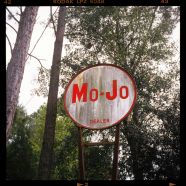





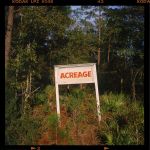
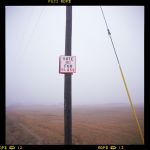
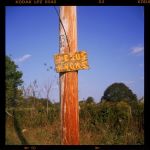

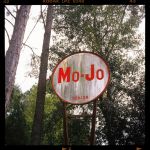
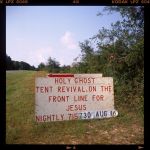
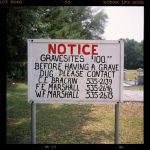
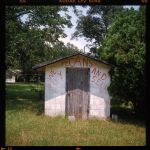
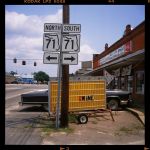
He should consider releasing his book in an affordable format $1,500 is not a figure many can spend. The book is fabulous though.